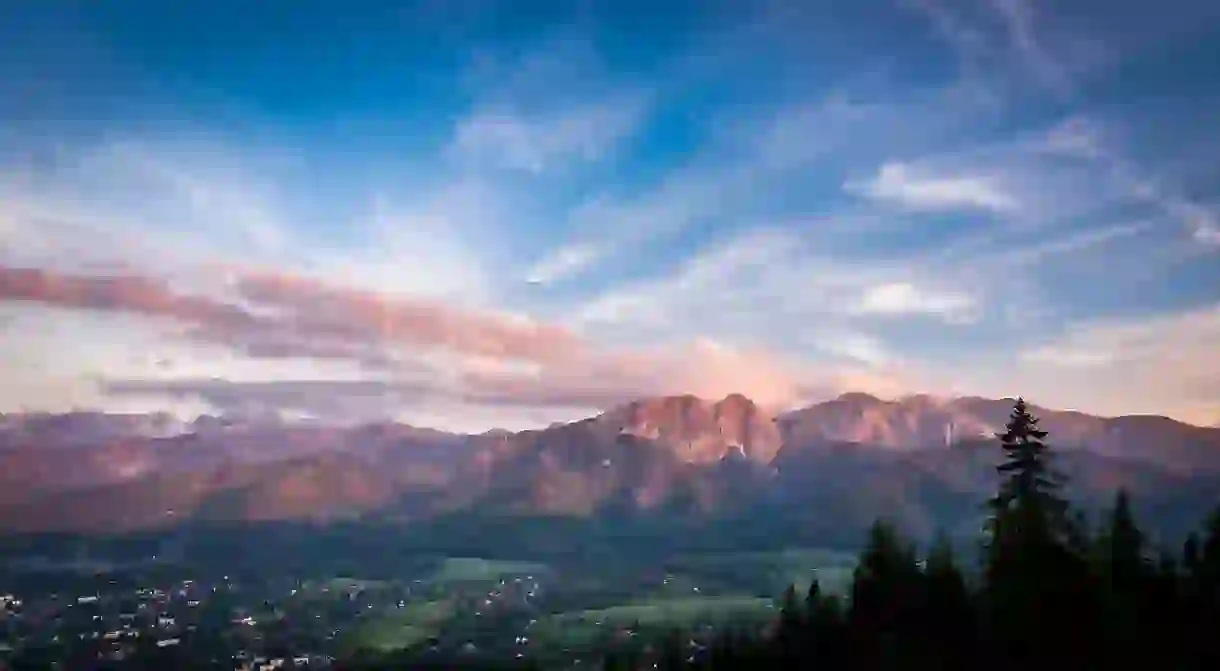8 Must-Visit National Parks in Slovakia

Slovakia is a mountainous country, crisscrossed by many rivers and dotted with several lakes. Several of the pristine nature areas in Slovakia are classified as UNESCO World Biosphere Reserves in order to protect their outstanding beauty. Here’s the eight best national parks in Slovakia where you can hike, cycle, ski, and enjoy the outdoors.
High Tatras (Vysoke Tatry)
Park
Low Tatras (Nizke Tatry)
Situated to the south of the High Tatras, the Low Tatras feature several peaks over 2,000 meters (6568 ft), with the highest being Dumbier, at 2,042 meters (6699 ft). Around 1,600 meters (5249 ft), the tree line stops, leaving bare exposed mountains for adventurous hikers. Passing amongst the rocky paths, it is very common to spot mountain goats. It is almost always windy and a bit chilly (even in summer) at the highest peaks of Dumbier, Chopok, Derese, and Chabenec, so make sure to be prepared for inclement weather. The Low Tatras are also home to Jasna, the largest ski resort in Central Europe with 49 kilometers of marked ski runs.

Slovak Paradise (Slovensky Raj)
Park
Pieniny
Perhaps the most popular tourist activity in Pieniny National Park is taking a raft trip down the Dunajec River with a guide wearing a traditional folk costume and narrating the journey. There are also several well-marked hiking and mountain biking trails which take visitors through the forests, up hills, and along streams. This is one of the smallest natural parks in Slovakia, but conveniently located to combine with a trip to the High Tatras.

Little Faltra National Park (Mala Fatra)
Park

Nearby, you can also find Slovak Bethlehem at Rajecka Lesna, a beautiful pilgrimage site which depicts the birth of Jesus in Bethlehem as well as stories from Slovakia’s history. It is a national masterpiece, and a meaningful site for those of the Christian faith. The historic village of Cicmany is also in this region. Cicmany is famous for being the first folk architecture reserve in the world and stuns visitors with intricately decorated log homes. The white folk ornamentation is typical for Slovakia, and is often used as a symbol of national pride.
Poloniny
Forests cover more than 80% of the protected nature area in the Poloniny National Park. “Poloniny” means “meadow” in Eastern Slovak dialects and there are, of course, many beautiful mountain meadows in the park. Beech trees are also abundant and some areas of the park are included in the Primeval Beech Forests of the Carpathians, which is a UNESCO World Heritage Site. In the winter, marked cross country skiing trails offer a popular weekend escape. In the summer, you’ll find many tourists from neighboring countries, who are enjoying some fresh air and hoping to spot the protected European bison who live in the park.

Po'lana Protected Landscape Area (Chránená krajinná oblasť Poľana)
Church
If you start your hike to the top from the town of Hriňová, you’ll pass by terraced fields which many visitors say look transported from Tuscany. You’ll also get to visit a beautiful church on a hill overlooking the town. Keep going up to reach Vodopad Bystro, a gorgeous 23 meter (75 ft) high waterfall which was formed by volcanic activity as the lava flowed down through this steep area. You’ll have to climb a narrow ladder to continue hiking up towards Po’lana after the waterfall and doing so is fun for adults but not recommended for small children or dogs. You can choose to hike back down to Hriňová, or to take another trail towards Detva, a small town with deep folk traditions, and many shops selling Slovak embroidery – a perfect souvenir from your trip!
Slovak karst (Slovensky kras)
Park, Ruins













